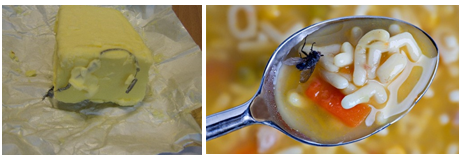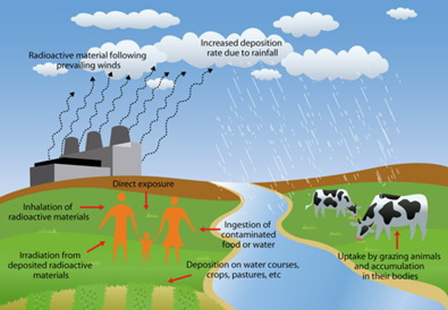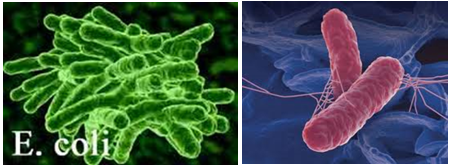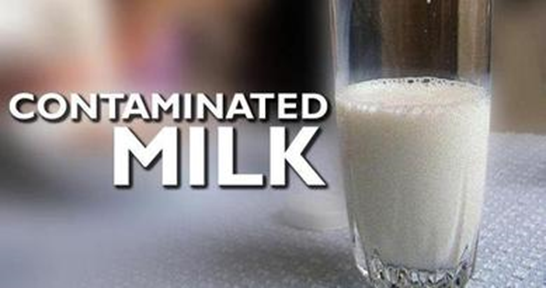Definition
Contaminants are referring to any harmful substances that have not been intentionally added into foods which can cause consumer illness.
In general, there are 3 main types of contaminants in foods :
- physical
- microbiological
- chemical.
According to Malaysian Food Regulations 1985, contaminants are known as ‘incidental constituent’ which means any foreign, extraneous, toxic, noxious or harmful substances that is contained or present in or on the any food and includes metal contaminant, microorganisms and their toxins, drug residue and pesticide residue but does not include preservative, colouring substance, flavouring substance or any other substance permitted to be added to food.
There is Maximum Limit / Maximum Residue Limit set for each contaminant under these Regulations.
Since food contaminants generally has a negative impact on the quality of food and may imply a risk to human health, food manufacturer or food handler should ensure that contaminant levels shall complied with the Regulations and kept the contamination level as low as can be reasonably achieved by following good practices.
The Food Safety and Quality Division, Ministry of Health Malaysia has enforced the Regulations.
Type of Food Contaminant
A) Physical contaminants
Physical contaminants are referring to any extraneous object or foreign matter in a food which may cause illness or injury to a person consuming the product.
These foreign objects include, but are not limited to :
- bone or bone chips,
- metal flakes or fragments,
- injection needles,
- pieces of product packaging,
- stones, glass or wood fragments,
- insects or other filth,
- personal items, or any other foreign material not normally found in food products.

Physical contamination can occur at any stage of the food chain includes :
- raw materials,
- badly maintained facilities and equipment,
- improper production procedures, and
- poor food handling practices.
B) Microbiological contaminants
Microbiological contaminants which cause foodborne illness usually arise from improper handling, preparation, or food storage as well as environmental contamination.
Most common bacterial foodborne pathogens are :
Example : Salmonella spp in chicken & Escherichia coli O157:H7 in ground beef.
Other common bacterial foodborne pathogens are :
- Bacillus cereus,
- Escherichia coli,
- Listeria monocytogenes,
- Staphylococcus aureus,
- Vibrio parahaemolyticus, and
- Brucella spp.
Example : Listeria monocytogenes in cheese & Vibrio parahaemolyticus in shrimp.
In addition, some foodborne illnesses are also caused by toxins produced by the bacterial even when the bacterial have been killed.
Staphylococcal toxins are the most commonly reported toxins although cases of poisoning are likely underestimated. Other bacterial produce toxins are :
3) Bacillus cereus.
Other than that, there are mycotoxins produced by fungi which have important effects on human and animal health. The common foodborne mycotoxins include :
1) aflatoxins
2) fumonisins
3) ochratoxins
4) patulin
5) deoxynivalenol
6) zearalenone.
Example : Aflatoxins in peanuts & patulin in apple juice.
C) Chemical contaminants
The contamination of food by chemical hazards is a worldwide public health concern and is a leading cause of trade problems internationally. Contamination may occur :
- through environmental pollution of the air, water and soil;
- through the intentional use of various agrochemical;
- through the processing of foods;
- through migration of chemical from food packaging; or
- naturally in foods.

(i) Environmental contaminants are chemicals that are present in the environment in which the food is grown, harvested, transported, stored, packaged, processed, and consumed.
- The physical contact of the food with its environment results in its contamination, for example :
- heavy metal (plumbum, cadmium, mercury, arsenic)
- nitrate and nitrite
- polychlorinated biphenyls (PCB)
- dioxins
- radionuclides
- polycyclic aromatic hydrocarbons (PAH).
Example : Nitrate and nitrite in vegetables & arsenic in fish and seafood.
(ii) Agrochemicals are chemicals used in agricultural practices and animal husbandry with the intent to control pests, increase crops yield and reduce costs.
- The residue of these agrochemical may remain on or in food after they are applied on the food crops, for example :
- pesticides (e.g. carbendazim, fenthion, profenofos)
- veterinary drugs (e.g tetracycline, oxacilin, streptomycin).
 Example : Fenthion in mango & streptomycin in cow’s milk.
Example : Fenthion in mango & streptomycin in cow’s milk.
(iii) Processing contaminants are absent in the raw materials, and are formed by chemical reactions between natural and/or added food constituents during processing (e.g. heating, fermentation).
- The presence of these contaminants in processed foods cannot be entirely avoided. Technological processes can be adjusted and/or optimized, however, in order to reduce the levels of formation of processing contaminants such as nitrosamines, polycyclic aromatic hydrocarbons (PAH), acrylamide, 3-monochloropropane-1,3-diol (3-MCPD), benzene and ethyl carbamate.
Example : Acrylamide in french fries & PAH in grilled chicken.
(iv) Migration of chemical from food packaging can be a source of food contaminants.
- The migration of chemical packaging into food are depending on :
- type of packaging material
- additives used in food packaging
- temperature of foods
- type of foods.
Examples : Migration of Bisphenol A & migration of printing inks.
(v) Natural toxins can be found naturally in several foods. Plants in particular may be toxic; animals which are naturally poisonous to eat are rare. Examples of natural toxins are :
- alkaloids
- allergen
- ciguatera toxin
- shellfish toxin (i.e. paralytic shellfish poisoning, diarrhetic shellfish poisoning, neurotoxic shellfish poisoning).
D) Emerging food contaminants
While many food contaminants have been known for decades, the formation and presence of certain chemicals in foods has been discovered relatively recently.
These are the so-called emerging food contaminants like perchlorate and perfluorooctanoic acid (PFOA).
E) Adulterant in foods
An adulterant is a substance found within food and beverages, although not allowed for legal or other reasons.
The addition of adulterant done either for financial gain or due to carelessness and lack in proper hygienic condition of processing, storing, transportation and marketing. This ultimately results that the consumer is either cheated or often become victim of diseases. Past and present examples of adulteration, include :
- Urea, melamine and other non-protein nitrogen sources, added to protein products such as milk in order to increase protein content measurements.
- Maleic acid added into bubble tea to increase the chewiness and elasticity of the gel.
- High fructose corn syrup or cane sugar added to honey.
Food Contaminant Crisis
2008
Chinese milk scandal involving milk and infant formula, and other food materials and components, adulterated with melamine.
By November 2008, China reported an estimated 300,000 victims, with 6 infants dying from kidney stones and other kidney damage, and an estimated 54,000 babies being hospitalised.
The chemical appeared to have been added to milk to increase protein content so that the low quality milk can be selling at optimum price. The World Health Organization (WHO) referred to the incident as one of the largest food safety events it had to deal with in recent years, and that the crisis of confidence among Chinese consumers would be hard to overcome.
2011
(i) Taiwan food safety scandal over the use one of plasticizer which is di(2-ethylhexyl) phthalate (DEHP) to replace palm oil in food and drinks as a clouding agent.
- This was used as a substitute for palm oil in clouding agents as a way to keep cost down and improve profits.
- The chemical agent has been linked to developmental problems with children as it affects hormones.
- The food affected includes beverages, fruit juices, bread, sports drinks, tea, and jam.
(ii) A novel strain of Escherichia coli O104:H4 bacteria caused a serious outbreak of foodborne illness focused in northern Germany in May through June 2011.
- The illness was characterized by bloody diarrhea, with a high frequency of serious complications, including hemolytic-uremic syndrome (HUS), a condition that requires urgent treatment.
- The outbreak has been caused by an enteroaggregative E. coli (EAEC) strain that had acquired the genes to produce Shiga toxins.
- On 30 June 2011, the German Bundesinstitut für Risikobewertung (BfR) (Federal Institute for Risk Assessment), announced that seeds of fenugreek imported from Egypt were likely the source of the outbreak. In all, 3,950 people were affected and 53 died, 51 of which were in Germany.
2013
On August 3, Fonterra announced that it found bacteria in 3 batches of their dairy products, which could cause botulism – a potentially fatal disease.
Fonterra’s announcement led to a global recall of up to 1,000 tons of dairy and dairy-based products across 7 countries, including China. To date, no one has reported illness as a result of consuming the contaminated dairy products.
Monitoring
Since 1976, WHO has implemented the Global Environment Monitoring System – Food Contamination Monitoring and Assessment Programme (GEMS/Food), which has informed governments, the *Codex Alimentarius Commission and other relevant institutions, as well as the public, on levels and trends of contaminants in food, their contribution to total human exposure, and significance with regard to public health and trade.
*The Codex Alimentarius Commission is an intergovernmental body to implement the Joint FAO/WHO Food Standards Programme. Its principle objective is to protect the health of consumers and to facilitate the trade of food by setting international food standards, food guidelines, codes of hygienic practices and other which can be recommended to governments for acceptance.
The Ministry of Health Malaysia, under the Food Safety and Quality Division conducts testing and analysing of foods both for enforcement and monitoring purposes. The tests conducted include physical, microbiological and chemical testing.
Reference
- Codex General Standard For Contaminants And Toxins In Food And Feed – CODEX STAN 193-1995
- Global Environment Monitoring System – Food Contamination Monitoring and Assessment Programme (GEMS/Food) http://www.who.int/foodsafety/chem/gems/en/
Link :
- Website : fsq.moh.gov.my
- Facebook : facebook.com/bkkmhq
| Last Reviewed | : | 23 September 2016 |
| Writer | : | Nur Hidayah binti Jamaludin |
| Accreditor | : | Laila Rabaah binti Ahmad Suhaimi |











